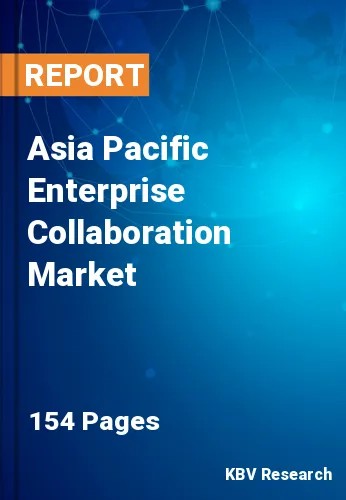The Asia Pacific Enterprise Collaboration Market would witness market growth of 12.7% CAGR during the forecast period (2022-2028).
Monitoring the state of a project at any given time is an important component of delivering the project successfully to customers and stakeholders. This process has been made more convenient using remote team collaboration tools. Users can see the impending deadline, who's working on which tasks, and what state the project is in a glance because all of the information is in one spot. When it comes to project planning, employees can share ideas with the entire team, or just a few key decision-makers, so that everyone can give comments and make decisions in one place. It's also less difficult to coordinate tasks amongst teams. If the user is forming a new cross-functional team, enterprise collaboration tools and software can help in finding profiles with the skills that are required. Moreover, enterprise collaboration tools and software can be set to automatically update important clients at regular intervals, rather than consuming a significant amount of time in reviewing meetings to provide quick updates.
The constantly growing BFSI industry of India would play a major role in accelerating the growth of the enterprise collaboration market in this region. The Asia-Pacific region suffered a severe impact due to the emergence of the COVID-19 pandemic. Due to a substantial number of COVID-19 cases in the region, almost all of the industries across the region shifted toward digital transformation. In order to continue their businesses, various market players also started to digitalize their businesses. Hence, the banking and finance sector also shifted their processes to various online and cloud-based platforms. In addition, according to the Niti Aayog of India, in 2021-2022 budget, the Finance Minister of India increased the FDI cap for the insurance sector would be increased from 49% to 74%. Due to this, the BFSI sector of the country is anticipated to observe significant growth in the coming years.
The China market dominated the Asia Pacific Enterprise Collaboration Market by Country 2021, and would continue to be a dominant market till 2028; thereby, achieving a market value of $8.1 billion by 2028. The Japan market is experiencing a CAGR of 12% during (2022 - 2028). Additionally, The India market would showcase a CAGR of 13.4% during (2022 - 2028).
Based on Component, the market is segmented into Solution and Services. Based on Solution Type, the market is segmented into Enterprise Video, Unified Messaging & Enterprise Social Network, Business Process Management, File Sharing & Synchronization, Project Management & Analytics, and Others. Based on End-User, the market is segmented into BFSI, Public Sector, Energy & Utilities, Manufacturing, Telecom & IT, Retail & Consumer Goods, Healthcare & Life Sciences, Travel & Hospitality, and Others. Based on Deployment Type, the market is segmented into On-premise and Cloud. Based on Organization Size, the market is segmented into Large Enterprises and Small & Medium Enterprises. Based on countries, the market is segmented into China, Japan, India, South Korea, Singapore, Malaysia, and Rest of Asia Pacific.
Free Valuable Insights: The Worldwide Enterprise Collaboration Market is Projected to reach USD 107.1 Billion by 2028, at a CAGR of 15.6%
The market research report covers the analysis of key stake holders of the market. Key companies profiled in the report include IBM Corporation, Microsoft Corporation, Google LLC, SAP SE, Cisco Systems, Inc., Adobe, Inc., Facebook, Salesforce.com, Inc., Citrix Systems, Inc., and RingCentral, Inc.
By Component
By End User
By Deployment Type
By Organization Size
By Country
Our team of dedicated experts can provide you with attractive expansion opportunities for your business.

